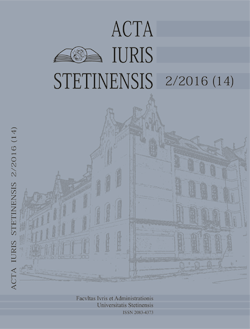PRZESTĘPSTWA DYSTANSOWE I TRANZYTOWE.
DISTANCE AND TRANSIT CRIMES.
Author(s): Mariusz NawrockiSubject(s): Law, Constitution, Jurisprudence, Criminal Law, Penal Policy
Published by: Wydawnictwo Naukowe Uniwersytetu Szczecińskiego
Keywords: distance crime; transit crime; the place of the offense; „many places” rule;
Summary/Abstract: In criminal law, in which apply the rule of nullum crimen sine lege, forcing the statutory elements of the offenses shape, there are many structures with extralegal normalization. For the construction of such can include – recognized in the Polish doctrine as controversial – the transit offense. Similar construction is distance offense. Transit and distance crimes have one thing in common – are committed each time in different locations. This is possible thanks to „many places” rule, governed by article 6 § 2 Polish Penal Code. According to it, an offense shall be deemed committed in the place where the perpetrator acted or failed to act, to which he was obliged to, or where the effect constitutes a criminal act occurred or the intention of the perpetrator to ensue. It should be noted that the controversial nature of the transit offense stems from the fact that according to most authors, this design does not fit in the framework of the art. 6 § 2 Polish Penal Code. In turn, distance crime, as far as is consistent with the „many places” rule, that does not mean it is a symptom of the traditional crime. Basically, because the typical offense (behavior and effect) is fully implemented in one location.
Journal: Acta Iuris Stetinensis
- Issue Year: 2016
- Issue No: 14 (2)
- Page Range: 89-103
- Page Count: 15
- Language: Polish

